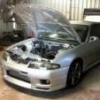Gtr Bov
Announcements
-
Similar Content
-
Latest Posts
-
Whats a couple of hundred dollars to protect a multi thousand dollar engine that is going to have a Gregged water pump on it soon...
-
Well, you've already got one of them, so you only need to add one more. C'mon, you know you want to. Deep down your inner masochist is just aching to punish your bank account a bit more. Just a bit more.
-
Sounds good....do you have a dyno run for it? Also, sounds like you should get an Ecutek tune shortly to make the most of the hard changes.
-
By Murray_Calavera · Posted
But if you've got the flex sensor whats the issue? You just run what you can get your hands on. I can't see any reason not to run e85 if it's relatively local to where you live.
-





Recommended Posts
Create an account or sign in to comment
You need to be a member in order to leave a comment
Create an account
Sign up for a new account in our community. It's easy!
Register a new accountSign in
Already have an account? Sign in here.
Sign In Now